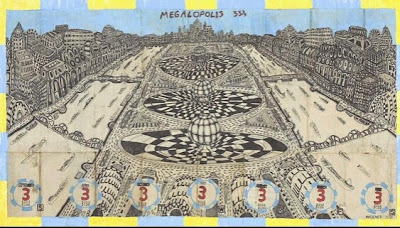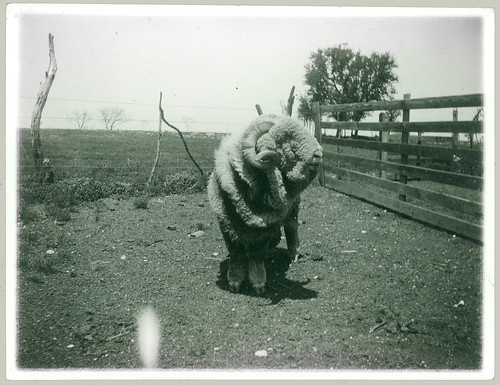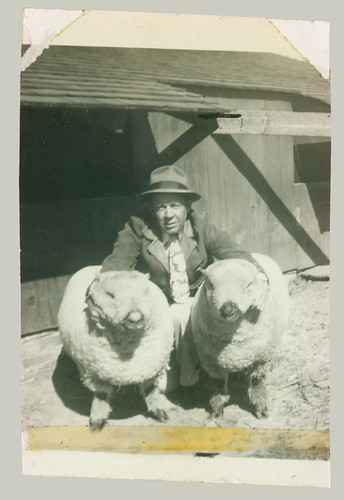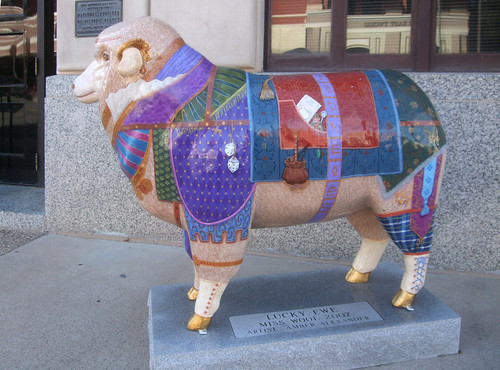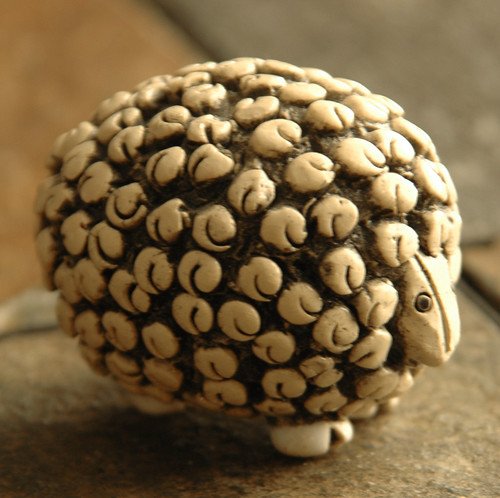 While searching for, perhaps, a poet to feature on this February/March cuspy weekend, I came across mention of one Mercedes de Acosta. I'd never heard the name before, but read through a little of what's available about her on the net. Well...poet she was, and author of books of prose, and scriptwriter - but her gifts in those spheres must have paled in comparison to her sexual attraction - and to her own gender. She's remembered, these days, for her many passionate love affairs with some of the most celebrated and beautiful women of her generation, including Isadora Duncan, Marlene Dietrich, Eva Le Gallienne, and Greta Garbo. She was openly bisexual years before what has become known as the sexual revolution . In 1920, she married painter Abram Poole, the marriage survived for 15 years, though perhaps with husband and wife living apart for much of that time.
While searching for, perhaps, a poet to feature on this February/March cuspy weekend, I came across mention of one Mercedes de Acosta. I'd never heard the name before, but read through a little of what's available about her on the net. Well...poet she was, and author of books of prose, and scriptwriter - but her gifts in those spheres must have paled in comparison to her sexual attraction - and to her own gender. She's remembered, these days, for her many passionate love affairs with some of the most celebrated and beautiful women of her generation, including Isadora Duncan, Marlene Dietrich, Eva Le Gallienne, and Greta Garbo. She was openly bisexual years before what has become known as the sexual revolution . In 1920, she married painter Abram Poole, the marriage survived for 15 years, though perhaps with husband and wife living apart for much of that time. It is reported to have been a boast of Mercedes de Acosta that she could "get any woman from any man." I guess it could be said that Mercedes' sexual prowess was aided by her hot Latino bloodline. She was born into an affluent New York family , youngest of eight children, on 1 March 1893 in New York City. Her father, Ricardo de Acosta, was of Cuban and Spanish descent; her mother, Micaela Hernández de Alba y de Alba, was Spanish and reportedly a descendant of the Spanish Dukes of Alba. The family lived in a wealthy area of the city; the good and the great of those times were often entertained as family guests. Her sister, Rita Lydig, became a well-known, fashionable socialite.
During the 1920s, Mercedes was a well-known figure in New York's high society circles, but also in some of its lower dives - drag clubs and speakeasies. In her own words: “These were years guided by the spirit of the New. We were on fire with fire, with a passion to create and a daring to achieve.” She became a student of eastern religions, a strict vegetarian and an early feminist. Mercedes would have none of the era's uncomfortable female fashions - she quite often favoured trousers.
According to a source :
As a young child, Mercedes firmly believed she was a boy. She was raised Roman Catholic and tended toward the extremes. Mercedes played with boys, believing she was just like them, until age seven, when she realized her anatomy differed from her friends'. According to Hugo Victors, author of Loving Garbo, de Acosta recalled of that moment, "[E]verything in my young soul turned monstrous and terrible and dark." She was sent to a convent to adopt more feminine ways. She often ran away, claiming she could not be defined as either boy or girl but perhaps as both. This flexibility extended to her spirituality, whereby she proclaimed to have no belief or faith in dogma, but rather is reported as saying, "I believe in taking the essence from all religions and arriving at your own creed." Unfortunately, her confusion often led to bouts of depression.
Robert A. Schanke, Mercedes' most recent biographer, after extensive research, acknowledged that Mercedes was "flawed and imperfect, a complex woman who impaired several of her relationships and failed to achieve her professional and romantic aspirations." But the author also reveals her to have been an exceptionally lively, intelligent, and dynamic person who had many devoted friends. She was, he argues, a brave lesbian of her times and a person of integrity who remained kind and loyal to most everyone with whom she crossed paths. He suggests that the many denigrating portrayals of her may derive from the deep homophobia of her generation. (See here)
Mercedes spent her last years poor and lonely. Paying many medical bills resulting from various illnesses and surgeries, had impoverished her to the point where she'd even had to sell her diamonds. Her 1960 autobiography, Here Lies the Heart, alienated many of her friends, who claimed the book to be wildly exaggerated and even blatantly untrue.
Mercedes de Acosta died in May 1968, aged 75.
A very good website of biographer Robert Schanke has lots more detail in several sections, and many photographs.
ASTROLOGY
Born on 1 March 1893 in New York City. No time of birth is known, chart is set for 12 noon.
Pisces Sun (self) was in harmonious trine to Uranus (avant garde) in Scorpio (sex, eroticism) - a clue!
 Sun also sextile Mars (the masculine), with both planets linking via quincunx (150*) to Saturn - possibly indicates an innate but scratchy relationship of a female/masculine self funnelled through Saturn (work - her writing)? Saturn in Libra, the apex of that Yod, also links harmoniously to the generational Pluto/Neptune conjunction in Gemini, combining creativity and sexiness/darkness.
Sun also sextile Mars (the masculine), with both planets linking via quincunx (150*) to Saturn - possibly indicates an innate but scratchy relationship of a female/masculine self funnelled through Saturn (work - her writing)? Saturn in Libra, the apex of that Yod, also links harmoniously to the generational Pluto/Neptune conjunction in Gemini, combining creativity and sexiness/darkness. What else? We can't know Moon's position without a time of birth - was it Leo or Virgo? Leo seems most fitting, but Virgo is ruled by Mercury and Mercedes was a writer. So - take your pick!
What else? We can't know Moon's position without a time of birth - was it Leo or Virgo? Leo seems most fitting, but Virgo is ruled by Mercury and Mercedes was a writer. So - take your pick!Venus, planet of love and art in Aquarius links to her avant garde nature and Venus lay in helpful sextile to Jupiter in Aries, which, being translated = a whole lot(Jupiter) of love (Venus).






































